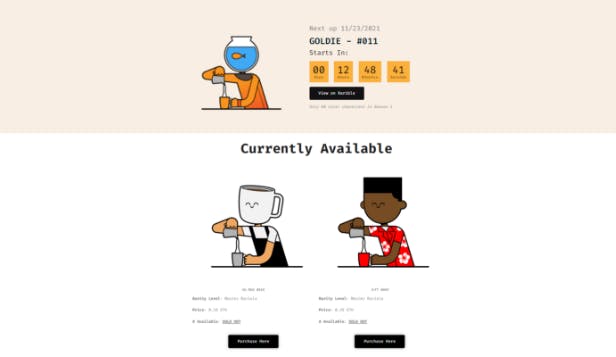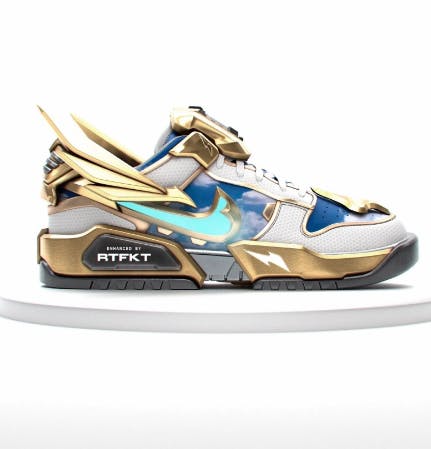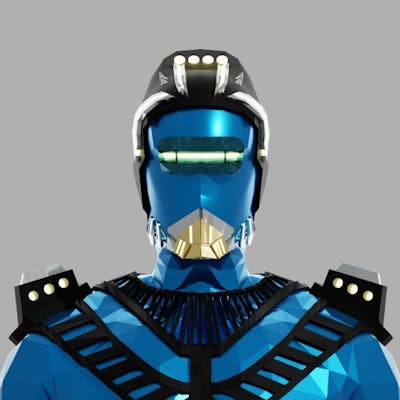Most NFTs fail, yet most brands queue up to tap into them. Cristiano Ronaldo, arguably one of the most prominent sports brands personality, just inked his name in the sector by tapping Binance as his NFT partner. The sports icon will be launching a series of NFT collections exclusively on the Binance NFT marketplace, providing unique experiences to football fans globally. Even Kanye West, a multiple award-winning rapper, who once shunned the idea of NFTs, recently filed up to 17 NFT trademarks for his Yeezus sneaker brand. How should you react as one in charge of thinking about this emerging sector for your company or brand? The burning questions remain; should you launch your new collection and ram it down the throat of hardliner NFT natives? Or should you rather just parley with existing collections out there? Or even do both? I answered these questions in this article, intending to help brands looking to make inroads into the NFT space do it rightly. Let’s get right into it.
Launch a new collection
“People are very open-minded about new things, as long as they're exactly like the old ones.” —Charles F. Kettering
As more brands dip their feet into the Web3 space, conversations around NFT utilities drum louder. Think of NFTs as a bridge linking your brand with your customers' changing dynamics and what they interact with. A good option for a small to mid-scale business looking to get into NFTs would be to launch a collection with a tie-in to the brand’s business. For example, a restaurant could sell an NFT as a ticket to get into a holiday party. If the ticket holder can't make it, they could resell it to someone else. New York City-based roaster Coffee Bros launched Crypto Baristas, a bunch of illustrated, coffee-pouring NFT characters. Owning a Crypto Barista gives holders lifelong access to caffeinated perks at all future cafe spaces and websites and a say in how the “Barista Bank,” a 15% fund set aside for future projects, is run.

What type of NFT to choose?
NFT is not art. It’s a technology of trust, decentralisation, disintermediation, and the relationship between the artist and the ones that consume art. ~Jorge Sebastiao, Co-founder & CEO of GBO.
This depends on your business needs and the community you want to target. If you are into game development, you should launch a type of NFT that reflects your brand. The Azuki NFT Collection appeals to Anime fans, while Dolce and Gabbana NFTs are for people with exclusive and luxurious taste in fashion.
Knowing what works for your community and communicating benefits is key to driving adoption for your NFTs. Another example is the Louis Vuitton NFT game launched to celebrate 200 years and pay homage to the founder. The game allowed the fashion brand to tap into younger demographics and the global NFT community.
Advantage of launching a collection
Retaining your community by tying your product into a new trend is one benefit NFTs offer traditional businesses. Hence, launching a new NFT collection helps you tie your core values and business theme to the NFTs from scratch. For instance, Gucci and Blockchain.com were able to launch their NFTs customised to their community and business because they were involved in the development process and able to imbue elements of their brand identity into the NFTs. Also, launching your NFT allows shaping the NFT to your unique taste and experience. Blockhain.com hacked this by partnering with Unstoppable to enable their users to own a (.blockchain) domain of their choosing at a free mint.
Disadvantage of launching a collection
The managerial, marketing, financial and technical requirements are critical to consider in determining the launch of an NFT collection. For instance, John Cena called his NFT with WWE a "catastrophic failure" after selling only 37 gold-tier packages costing $1000 each.
How to launch and market your collection
Unveiling your collection to your community (in this case, your customers) is the most crucial aspect of launching and marketing your collection. Market research is critical if you must significantly reduce the risk of failure. To help make this process easy for you and your marketing team, which I presume may be new to the NFT industry, I have previously written on How to use effective marketing to turn your NFT collection into blue-chip. You can glean some gems for promoting your collection from this piece.
Launch a new collection after leveraging an existing Collection
Amazon had to think of ways to increase signups on Amazon Prime, and its solution was to acquire Whole Foods. Users who sign up for Amazon Prime memberships get discounts on groceries when shopping at Whole Foods. Now how can traditional businesses replicate this strategy with NFTs?
For Nike, it was easier to acquire a brand that was already into creating skins replicating its brand on the metaverse. Hence, Nike's acquisition of the NFT sneaker maker, RTFKT or the Adidas partnership with the Bored Apes Yacht Club is a way for traditional brands to jump on the NFT train without hassle. Acquiring an NFT collection allows a business to tap into the network effects of the existing community. It is relatively cheap, depending on the size of the NFT collection compared to building from the ground up.

Furthermore, before the acquisition, businesses must choose Collections with communities that best align with their products or services. Selecting the wrong NFT collection might prove to be counterproductive.
How do you choose the right NFT collection?
The collection to choose must resonate with your brand. One of the factors that will define the type of collection is your brand identity and business needs. The supply of the NFT is also another factor to consider. Is it a limited (supply) NFT collection or one with a relatively large or unlimited supply? Both types have their pros and cons. As a result of scarce quantities, collections with limited supply are usually high in price also because of their utilities, and they are generally in high demand.
Now, the question is, 'how do I optimise these types of NFTs for my community?' This is where fractionalisation comes in. For example, splitting the 10k CryptoPunks collection into fractions allows multiple parties to acquire and own them, making it possible for brands to connect with their community with a large number albeit fractional premium NFTs without having to worry about diluting holders' value and the limited supply of the premium NFTs. Quantix also allows users to buy and sell fractional NFTs easily.
Disadvantage of this choice
One of the challenges of buying into an existing collection is the possibility of low adoption. Another implication is that you cannot influence the identity of the NFT with your brand. You are only playing catch-up.
Promoting your NFT with your community
You can plan out collaborative marketing campaigns depending on the type of NFT your brand adopts. As a business, your brand commands relative influence; the NFT does too. Together you can promote the NFT to your community through AMAs/Twitter spaces, Podcasts, etc., offering incentives for people to interact with your brand.
Unlocking NFT utility with your current business model
An IRL utility can be in the form of using an NFT as a membership pass to an annual event (as in the case of VeeFriends) or incorporating other forms of social benefit for the NFT holders. The key to unlocking NFT utility is knowing how to integrate it into business operations for users to obtain value from it the same way they do with your product/service. For example, in the Coachella music festival, NFTs were issued to participants guaranteeing them lifetime access to the event. Burger King NFT allowed collectors to unlock physical or virtual prizes connecting them to the business. The idea is to tailor the utility of NFTs to improve and enhance your existing business model.
How do you do this?
Communicate benefits to your community
Why should anyone buy and hold your NFT? What value will they obtain from your NFT? questions.Think like your potential NFT holders, answer these questions, plan and execute accordingly. The holders of the VeeFriends NFT have the privilege to access VeeCon, an exclusive multi-day event for three years. Goblintown communicated from the onset there would be no utility, and discord server, and it was a free mint but its floor price went up as high as XYZ. This isn't a benefit, but it strengthens the need for communication. You should let your community know what they can benefit from your collection.
Show roadmap (if required)
Treat your potential holders/community like shareholders by sharing with them the plans you have for the collection. Roadmaps are subject to changes, therefore plan accordingly and make adjustments when necessary. If your NFT is a one-time-use product, you may not need to have a roadmap.
Do what no one has done before
Offer your community unique and new experiences. NFTs as passes to high-profile events have become a cliche; take your community to a new world. For example, Blockchain.com partnered with Unstoppable Domains to enable all its 82M users to own a (.blockchain) domain. They took it up another level by allowing users to choose their preferred domain names.
Conclusion
The question of transitioning into NFTs shouldn't be “why” but “when”? And if when, then "how"? There’s no singular silver bullet to the “how”. You must approach the sector with the mindset of web3 — putting your community first. As long as you have done your market research launching a new collection or riding the wave of an existing one must be carefully selected otherwise, your brand is on its way to falling face down and you don’t want that.
But there’s absolutely no need to get jittery if you still are not able to figure out your NFT strategy. Web3 is broad enough to accommodate. Let’s say you’re an ecommerce company, you could start by first accepting crypto and luring the web3 natives while giving your traditional customers room to adapt to the latest technology. Ikea for example didn’t go full gun blazing into NFTs but started with AR where it allowed customers to preview how any furniture would look like in their home. A softlanding like this could be a harbinger of deeper strategy into NFTs in the foreseeable future.
The most important thing is test the waters of web3 with your brand which might ultimately culminate into NFTs or something even more immersive like the metaverse.

